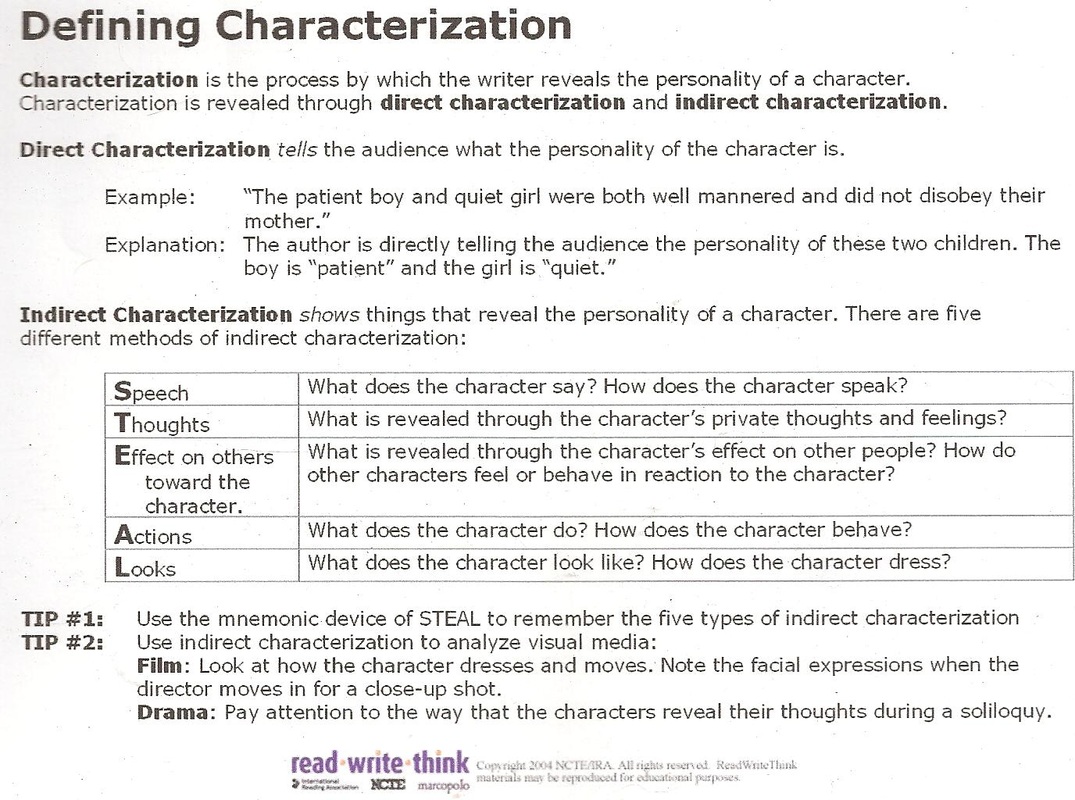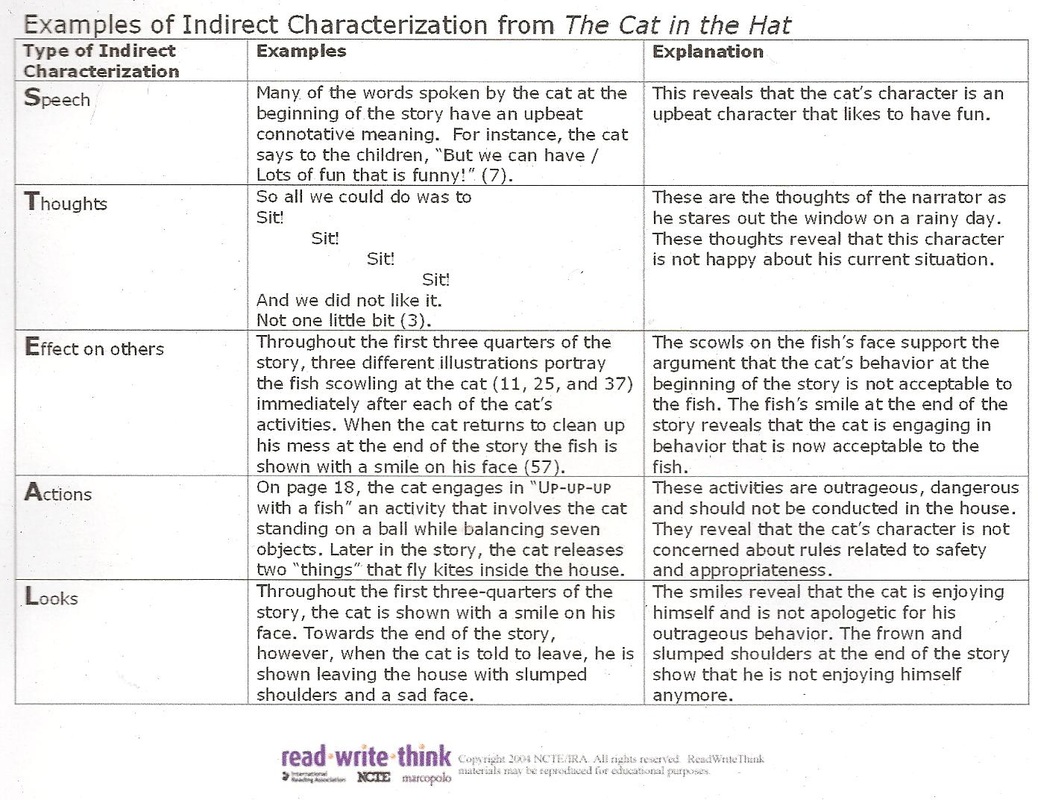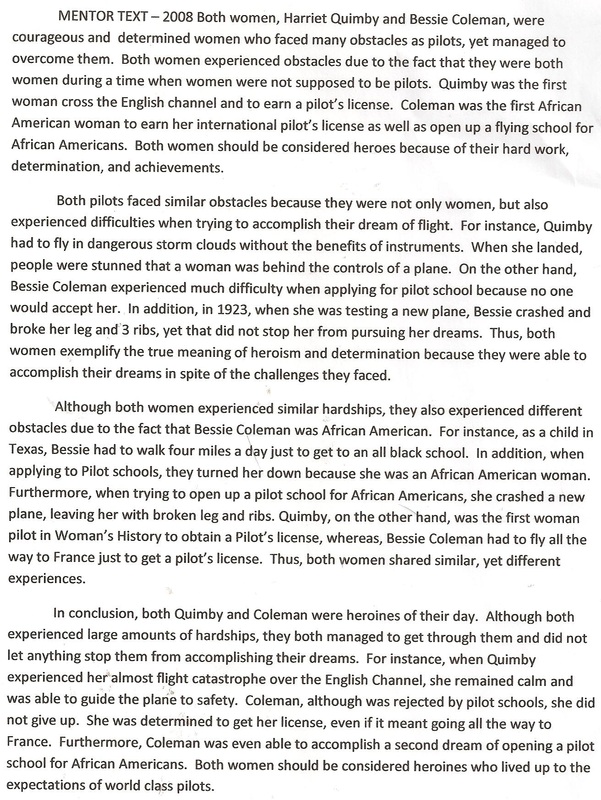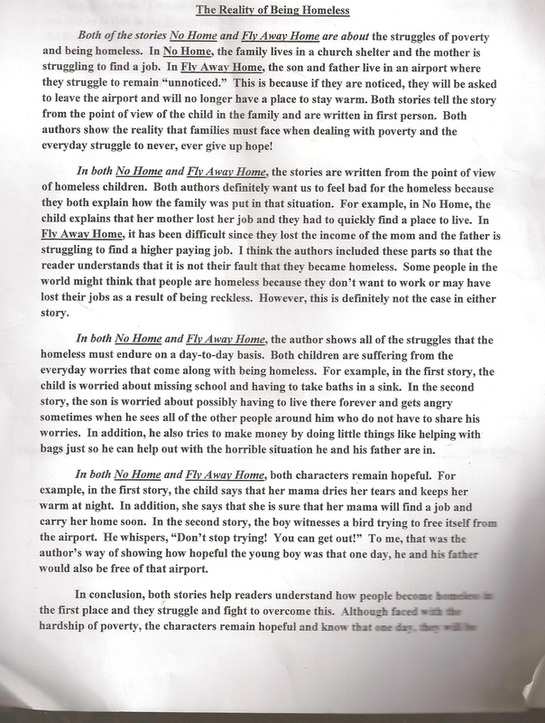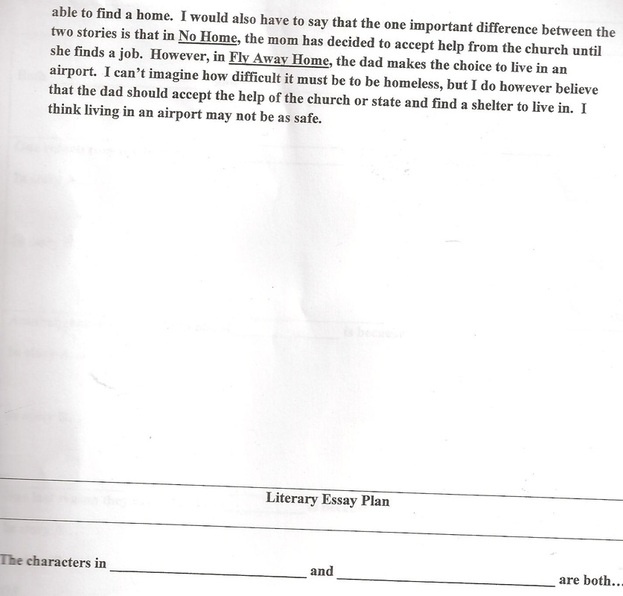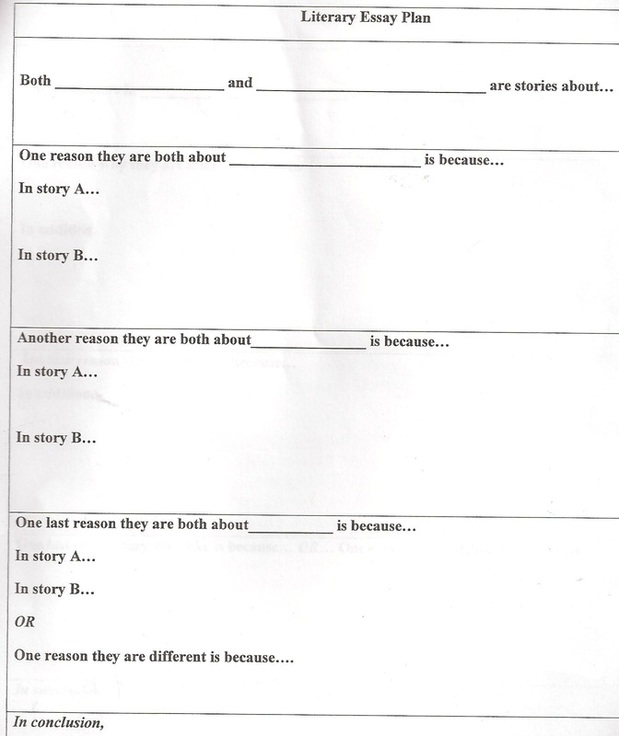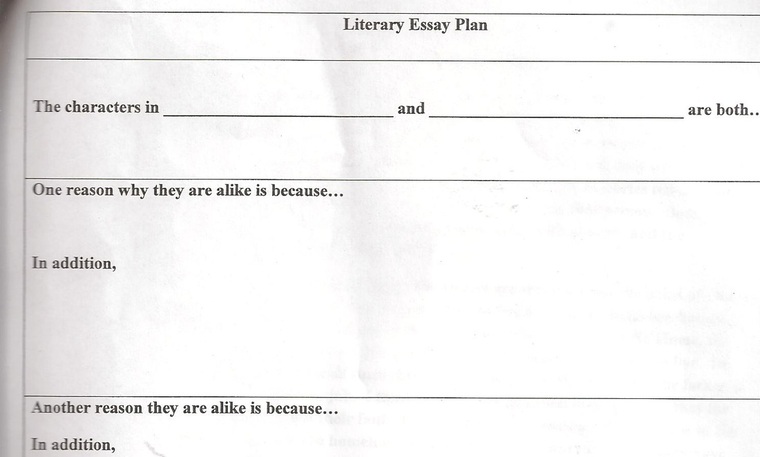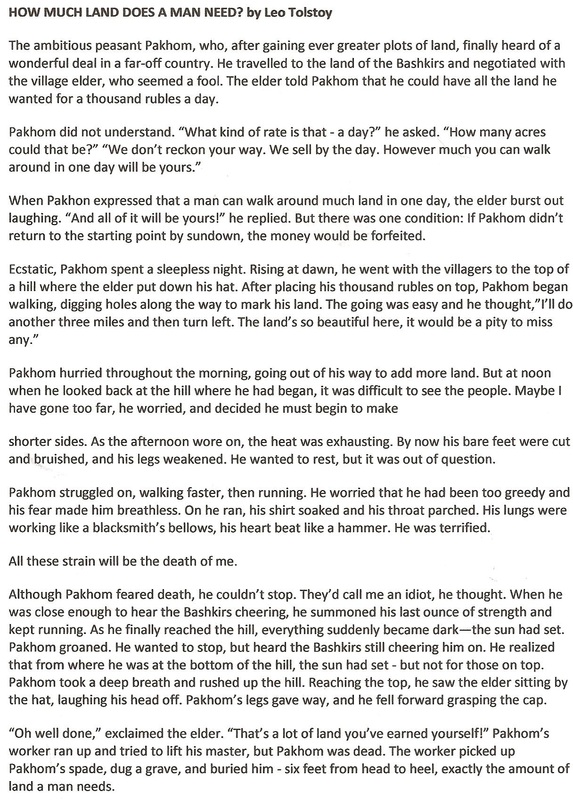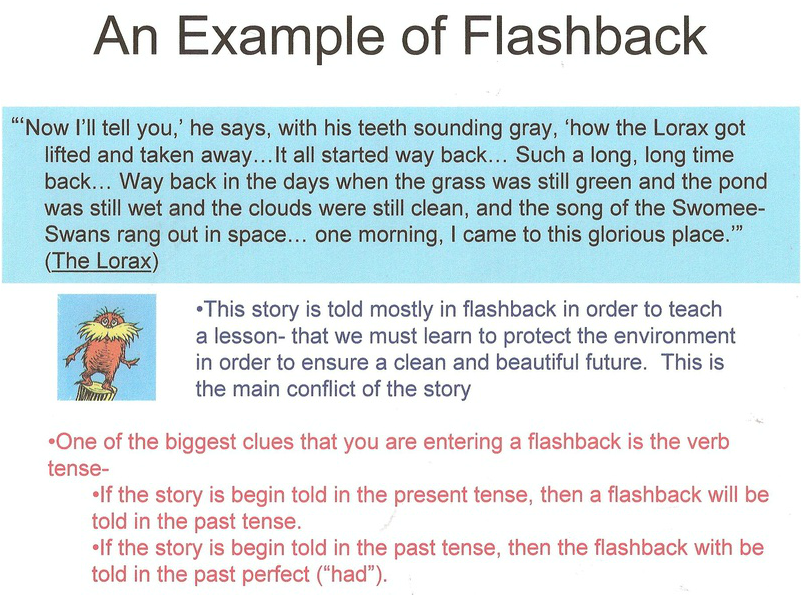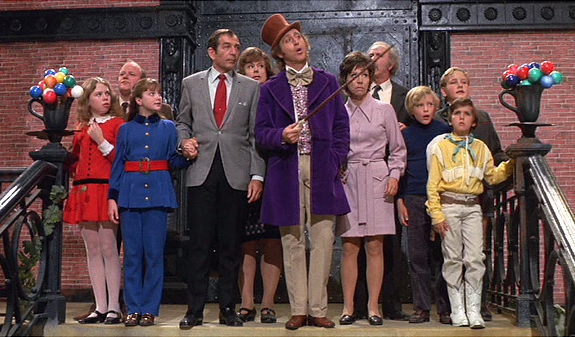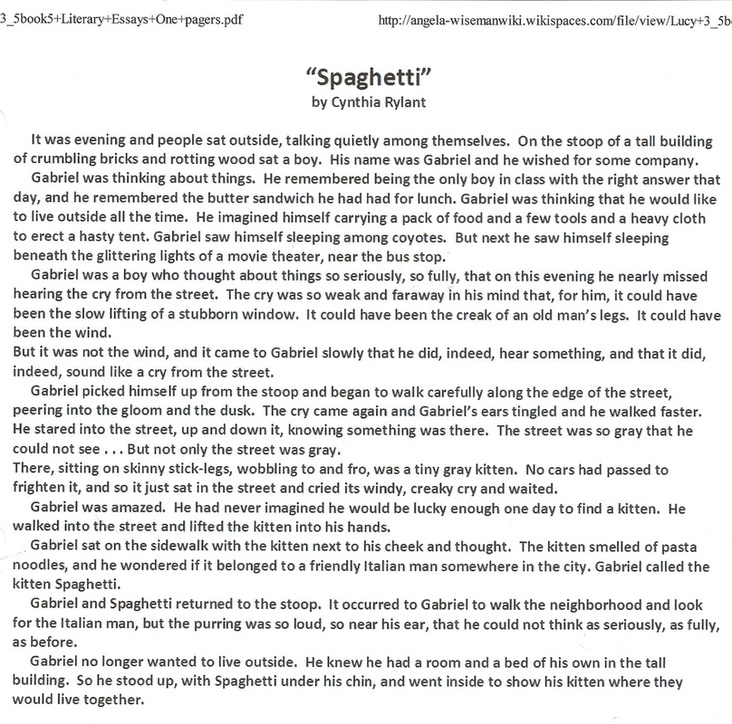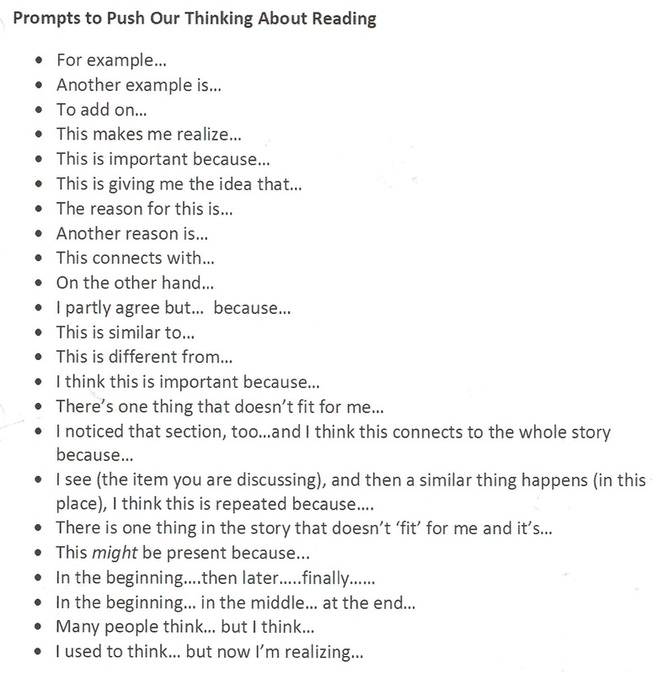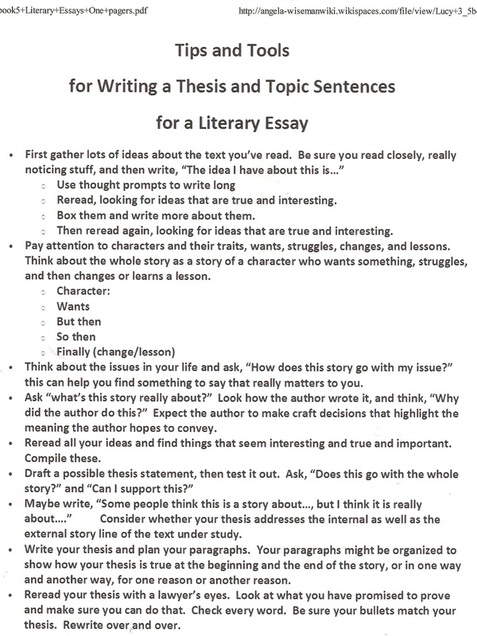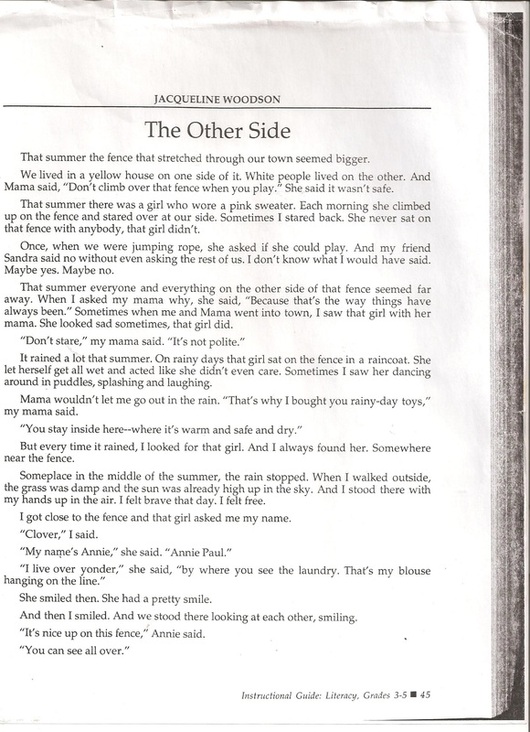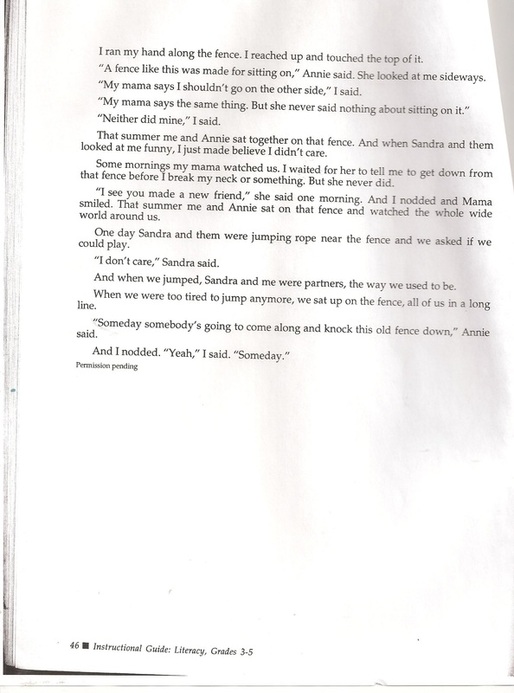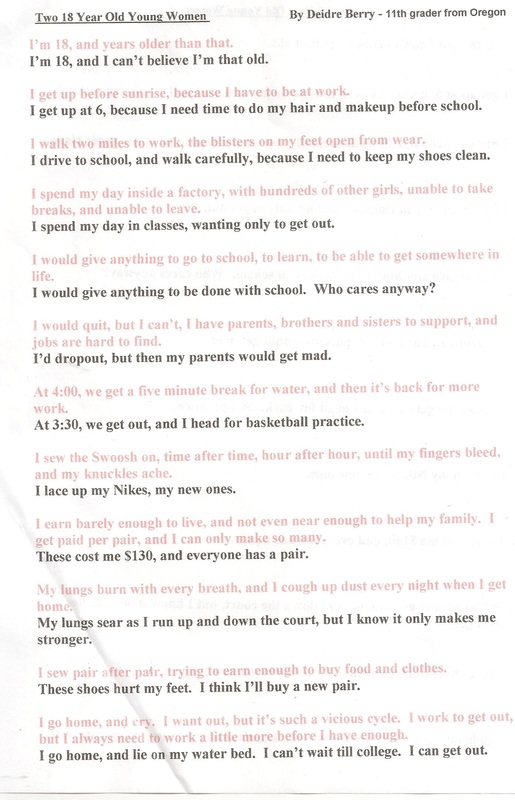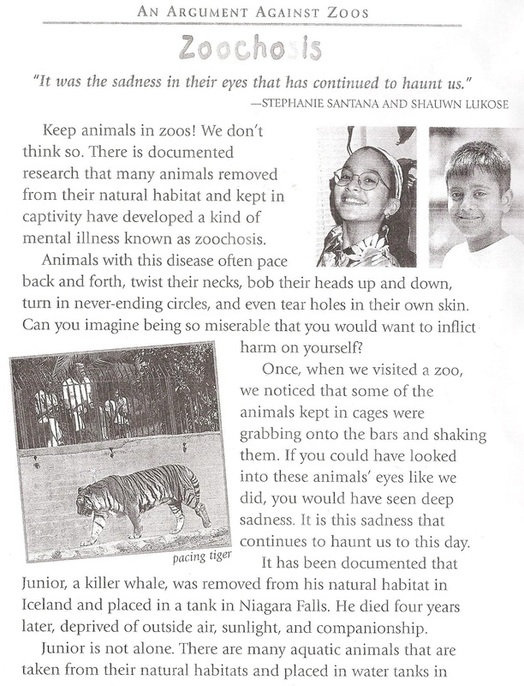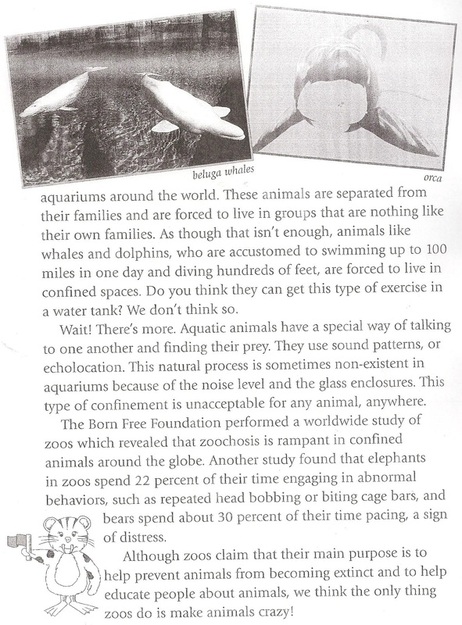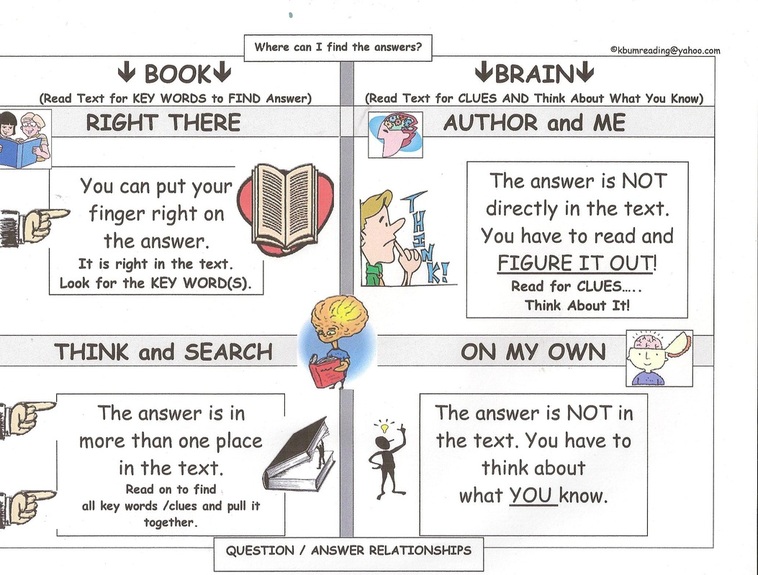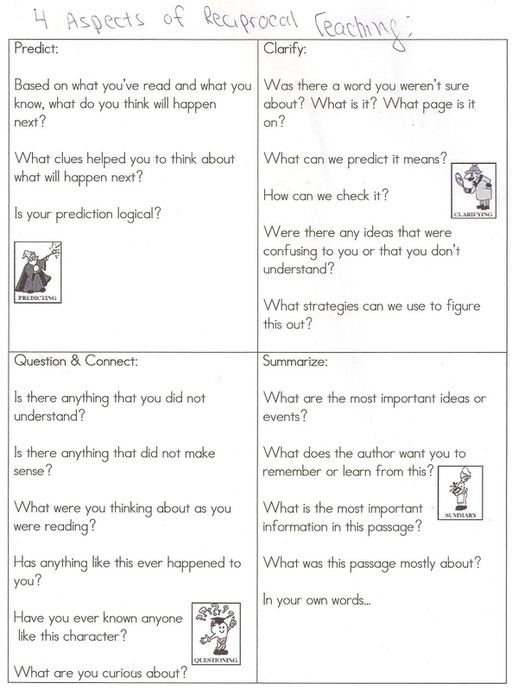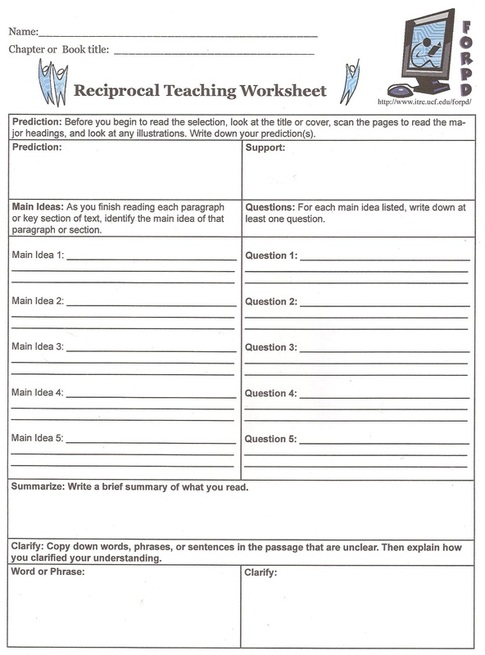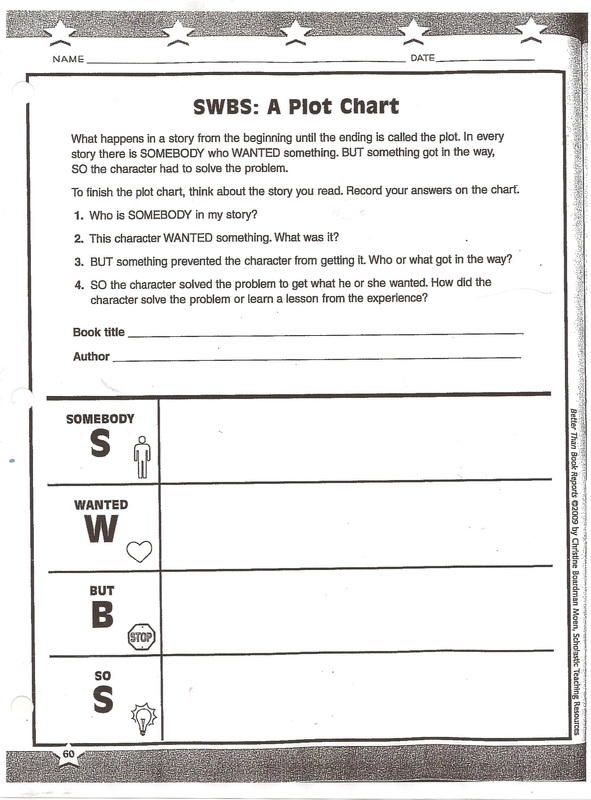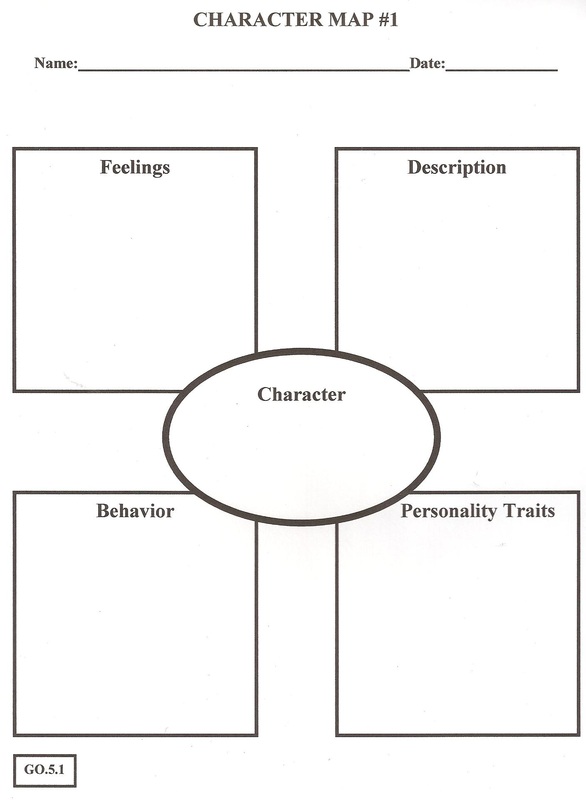LITERARY ESSAY RUBRIC:
| literary_essay_rubric_2011-12.doc | |
| File Size: | 38 kb |
| File Type: | doc |
| kohlbergrubric.doc | |
| File Size: | 28 kb |
| File Type: | doc |
| kohlbergpowerpoint.ppt | |
| File Size: | 839 kb |
| File Type: | ppt |
ANNE FRANK #5: DUE MONDAY, MAY 14
| annefrank5.doc | |
| File Size: | 24 kb |
| File Type: | doc |
HOLOCAUST BOOK CLUBS #4:
| holocaust_book_clubs4.doc | |
| File Size: | 29 kb |
| File Type: | doc |
ANNE FRANK #4:
| anne_frank_due_thursday.doc | |
| File Size: | 24 kb |
| File Type: | doc |
HOLOCAUST #3: DUE TUESDAY, MAY 7:
| holocaust_book_clubs3.doc | |
| File Size: | 40 kb |
| File Type: | doc |
ANNE FRANK#3--DUE MONDAY, MAY 6:
| anne_frank3.doc | |
| File Size: | 27 kb |
| File Type: | doc |
HOLOCAUST #2:
| holocaust_book_clubs2.doc | |
| File Size: | 33 kb |
| File Type: | doc |
TERRIBLE THINGS:
| terrible_things_text.doc | |
| File Size: | 32 kb |
| File Type: | doc |
ANNE FRANK RESOURCES:
Mr. Donn's Holocaust links for Kids: http://www.wartgames.com/themes/world/holocaust.html
Link to official Anne Frank House-museum in the Netherlands. Check out different sections. Great background information, pix and info about Anne, family, time period and her Holland before after the war: http://www.annefrank.org/en/Anne-Frank/
Holocaust-discrimination vocabulary: http://www.museumoftolerance.com/site/c.tmL6KfNVLtH/b.5063305/k.63A3/Vocabulary_and_Concepts.htm
Hidden Children background information. It is a teacher's guide but has great stories for you to read: http://www.ushmm.org/museum/exhibit/online/hiddenchildren/pdf/StudyGuide.pdf
Online exhibit of Hidden Children of the Holocaust: http://www.ushmm.org/museum/exhibit/online/hiddenchildren/index/
Link to official Anne Frank House-museum in the Netherlands. Check out different sections. Great background information, pix and info about Anne, family, time period and her Holland before after the war: http://www.annefrank.org/en/Anne-Frank/
Holocaust-discrimination vocabulary: http://www.museumoftolerance.com/site/c.tmL6KfNVLtH/b.5063305/k.63A3/Vocabulary_and_Concepts.htm
Hidden Children background information. It is a teacher's guide but has great stories for you to read: http://www.ushmm.org/museum/exhibit/online/hiddenchildren/pdf/StudyGuide.pdf
Online exhibit of Hidden Children of the Holocaust: http://www.ushmm.org/museum/exhibit/online/hiddenchildren/index/
ANNE FRANK #2--DUE WEDNESDAY, MAY 1:
| anne_franktwo.doc | |
| File Size: | 25 kb |
| File Type: | doc |
HOLOCAUST BOOK CLUB ONE:
| holocaustone.doc | |
| File Size: | 27 kb |
| File Type: | doc |
HOLOCAUST BOOK CLUBS PREVIEW:
| holocaust_previewing.doc | |
| File Size: | 48 kb |
| File Type: | doc |
ANNE FRANK #1:
DUE FRIDAY, APRIL 26TH
Read June 14, 1942-December 22, 1942
Please do not forget to keep your own journal as you complete each segment of the book. In your journal, record your own reactions to what you have read and your feelings about the characters. The journal should also include any predictions or conclusions you may draw about the events described.
VOCABULARY FOCUS-DEFINE THE FOLLOWING WORDS AND INDENTIFY THE PARTS OF SPEECH:
Read June 14, 1942-December 22, 1942
Please do not forget to keep your own journal as you complete each segment of the book. In your journal, record your own reactions to what you have read and your feelings about the characters. The journal should also include any predictions or conclusions you may draw about the events described.
VOCABULARY FOCUS-DEFINE THE FOLLOWING WORDS AND INDENTIFY THE PARTS OF SPEECH:
- MELANCHOLY
- DEVOUR
- FANATIC
- SUPERFLUOUS
- SOMBER
- TRIVIAL
- OBSTINATE
- OPTIMISM
- Why did Anne decide to keep a diary? Why did she name it Kitty?
- How did the German occupation of Holland affect Anne and her family?
- What did Anne mean when she wrote on July 8, 1942, “Years seem to have passed between Sunday and now. So much has happened, it is just as if the whole world had turned upside down?”
- Who helped the Franks decide to go into hiding? Why do you think they wanted to help the Franks?
- Where did the Franks and the Van Daans decide to hide?
- What attempts did Anne and her family make to keep their life as normal as possible?
- What news from the outside world made Anne realize the desperate conditions that the Jews faced?
- Why wouldn’t Anne let news from the outside world depress her?
- What did the first few pages reveal about the quality of Anne’s family life? How concerned did she then seem about the war in Europe?
- Why do you think it was difficult for the eight people to avoid quarreling as they settled in the Secret Annex? Do you think this was a normal reaction or that they were incompatible families? Explain.
- Compare the feelings Anne had for her mother with those she had for her father. Do you think these feelings were typical or unusual for a thirteen year old girl? Explain.
- Based on the quality of Anne’s writing and what she reveals about herself, how would you assess her level of maturity? Explain.
EMPATHY POWERPOINT:
| empathy.ppt | |
| File Size: | 567 kb |
| File Type: | ppt |
DIFFERENT TYPES OF QUESTIONS: PRINT AND PUT IN READING NOTEBOOK...MOST ELA ESSAYS ARE "AUTHOR AND ME" QUESTIONS
TEST TAKING TIPS: PRINT FIRST PAGE AND PUT IN READING NOTEBOOK. REVIEW AND RELAX...THESE WILL HELP.http://www.lakeshorelearning.com/media/images/free_resources/teachers_corner/printables/grade5LangPracticeTest.pdf
REMINDER: DAY THREE ESSAY STRUCTURE
| structures_to_teach_for_comparative_essay_structure.doc | |
| File Size: | 26 kb |
| File Type: | doc |
A FEW TEST TAKING STRATEGIES:
Readers will determine importance within a test passage by reading the questions first and underlining details as they read on (while remembering questions in their head or going between passage and questions)
· Students accumulate text by stopping after each section to think about what it is mostly about and adding key phrases to the margin (chunking)
· Students can become effective test takers by predicting answers first before revealing answers (making themselves more confident when choosing answer choices)
· Students become effective test takers by eliminating answer choices first.
LOOK AT BEGINNING AND END OF TEXTS FOR MAIN IDEAS.
· Students accumulate text by stopping after each section to think about what it is mostly about and adding key phrases to the margin (chunking)
· Students can become effective test takers by predicting answers first before revealing answers (making themselves more confident when choosing answer choices)
· Students become effective test takers by eliminating answer choices first.
LOOK AT BEGINNING AND END OF TEXTS FOR MAIN IDEAS.
FANTASY RESPONSE TO LITERATURE (DUE THURSDAY, APRIL 11TH):
| fantasyquestions.doc | |
| File Size: | 26 kb |
| File Type: | doc |
ELA MENTOR TEXT ESSAY (PRINT A COPY AND PUT IN READING NOTEBOOK):
FACING YOUR INNER DRAGONS POWERPOINT:
| facing_our_inner_dragons.ppt | |
| File Size: | 1478 kb |
| File Type: | ppt |
REALITY OF BEING HOMELESS:
READING-CONFLICT (ESPECIALLY IN FANTASY):
: Fantasy-Reading: Conflicts.
Link: We have started to think deeply about conflicts in fantasy but today we are going to dig deeper with inner struggles characters face. Sometimes these inner struggles appear as symbolic objects or creatures We are also going to start thinking about what our stories are really about and important life lessons as we have done all along with fiction. So let’s go deeper on our journeys.
Teach: Back in the olden days when English mapmakers were creating their literal understanding of the world, they thought it was dangerous. “Here be Dragons” symbolized the host of unknown dangers that travelers might encounter. Here be dragons" is a phrase used to denote dangerous or unexplored territories, in imitation of the medieval practice of putting sea serpents and other mythological creatures in blank areas of maps. According to Brewer's Dictionary of Phrase and Fable, "The animal called a dragon is a winged crocodile with a serpent's tail; whence the words serpent and dragon are sometimes interchangeable." Furthermore, says Brewer, the word "dragon" was used "by ecclesiastics of the Middle Ages as the symbol of sin in general. most medieval maps have serpents in southern Africa (i.e. southernmost part of habitable world), which derives from Classical Roman authors, e.g. Pliny the Elder and Soninus."
Several MapHisters mentioned that numerous terrifying and amazing beasts appeared on the sorts of map in question. These included many which are not considered mythical today (e.g. elephants, walruses, lions), but would have been just as fantastic as a dragon to contemporaries.
Carta marina: http://blog.oak-tree.us/wp-content/uploads/2010/08/SerpentsandDragons.jpg
The only place that you can find it is on the Hunt-Lenox globe – a small bronze globe created in the 16th century.* The magical words appear off the eastern coast of China.
http://www.virginmedia.com/images/03dragons431x300.jpg
Here by dragons symbolized the host of unknown dangers that travelers might encounter. Some of the dragons that characters face are metaphoric dragons. One way readers explore these dragons is to consider the inner struggles that characters face. These are the conflicts inside a character’s soul that haunt that character. Powerful readers learn to think metaphorically about these dragons. So today, let’s think about the dragons, inner demons or inner struggles facing the characters in our stories.
Independent: Think about the inner dragons facing your main characters. What is haunting the main character? What does he or she have to do in order to overcome the inner dragon? Apply this to what you are reading independently as well as for your book club books
Link: We have started to think deeply about conflicts in fantasy but today we are going to dig deeper with inner struggles characters face. Sometimes these inner struggles appear as symbolic objects or creatures We are also going to start thinking about what our stories are really about and important life lessons as we have done all along with fiction. So let’s go deeper on our journeys.
Teach: Back in the olden days when English mapmakers were creating their literal understanding of the world, they thought it was dangerous. “Here be Dragons” symbolized the host of unknown dangers that travelers might encounter. Here be dragons" is a phrase used to denote dangerous or unexplored territories, in imitation of the medieval practice of putting sea serpents and other mythological creatures in blank areas of maps. According to Brewer's Dictionary of Phrase and Fable, "The animal called a dragon is a winged crocodile with a serpent's tail; whence the words serpent and dragon are sometimes interchangeable." Furthermore, says Brewer, the word "dragon" was used "by ecclesiastics of the Middle Ages as the symbol of sin in general. most medieval maps have serpents in southern Africa (i.e. southernmost part of habitable world), which derives from Classical Roman authors, e.g. Pliny the Elder and Soninus."
Several MapHisters mentioned that numerous terrifying and amazing beasts appeared on the sorts of map in question. These included many which are not considered mythical today (e.g. elephants, walruses, lions), but would have been just as fantastic as a dragon to contemporaries.
Carta marina: http://blog.oak-tree.us/wp-content/uploads/2010/08/SerpentsandDragons.jpg
The only place that you can find it is on the Hunt-Lenox globe – a small bronze globe created in the 16th century.* The magical words appear off the eastern coast of China.
http://www.virginmedia.com/images/03dragons431x300.jpg
Here by dragons symbolized the host of unknown dangers that travelers might encounter. Some of the dragons that characters face are metaphoric dragons. One way readers explore these dragons is to consider the inner struggles that characters face. These are the conflicts inside a character’s soul that haunt that character. Powerful readers learn to think metaphorically about these dragons. So today, let’s think about the dragons, inner demons or inner struggles facing the characters in our stories.
Independent: Think about the inner dragons facing your main characters. What is haunting the main character? What does he or she have to do in order to overcome the inner dragon? Apply this to what you are reading independently as well as for your book club books
HOW MUCH LAND DOES A MAN NEED? BY TOLSTOY--PRINT AND BRING A COPY TO CLASS ON WEDNESDAY
FANTASY FINAL PACKET: DUE THURSDAY, MARCH 13TH
| fantasyfinal.doc | |
| File Size: | 35 kb |
| File Type: | doc |
FLASHBACK AND FORESHADOWING:
We will begin to discuss on Wednesday but you may review the following powerpoint (I did not make this one!):
http://www.google.com/url?sa=t&rct=j&q=&esrc=s&source=web&cd=1&ved=0CC8QFjAA&url=http%3A%2F%2Fbv6read.wikispaces.com%2Ffile%2Fview%2FForesh%2526Flashback.ppt&ei=ZTw9UZCaAarp0AHOkID4BQ&usg=AFQjCNGCtFjB2grGzP6Efbje7koPRRymMw&bvm=bv.43287494,d.dmQ
http://www.google.com/url?sa=t&rct=j&q=&esrc=s&source=web&cd=1&ved=0CC8QFjAA&url=http%3A%2F%2Fbv6read.wikispaces.com%2Ffile%2Fview%2FForesh%2526Flashback.ppt&ei=ZTw9UZCaAarp0AHOkID4BQ&usg=AFQjCNGCtFjB2grGzP6Efbje7koPRRymMw&bvm=bv.43287494,d.dmQ
FORESHADOWING (WITH EXAMPLE FROM CHARLIE AND THE CHOCOLATE FACTORY):
There is a great deal of foreshadowing inherent to the core story of Charlie and the Chocolate Factory. From Tim Burton’s most recent rendition (which will be the focus of this discussion) to the version featuring Gene Wilder, all the way back to the original Roald Dahl story, there is a significant level of foreshadowing intertwined in the narrative of the story.
The characters themselves are the most pronounced example of foreshadowing - and in a very diegetic way. The fate of every character in the story, from Augustus Goop to Charlie Buckett, is predicted through their traits and personality. In most cases the flaws and defects of an ugly character imply their eventual demise.
Augustus Goop is an obese, cow of a child who is eventually done in by his gluttony. Violet Bouregard is a rude and obnoxiously competitive champion gum chewer whose obnoxious over-confidence is her undoing. Veruca Salt, an unbelievably spoiled and rotten brat, is literally carried away by her greed. Mike TV, a young boy who spends all of his time watching television and playing video games, can’t resist the temptation of television even in the phenomenal surroundings he finds himself in as a result of being a finalist in the contest of the story.
Even in Charlie Buckett, the main protagonist, there is a degree of foreshadowing in his character traits (albeit in a less animated manner). Charlie, the simple, good-hearted boy who is “just lucky to be here” is the natural heir of the generous and eccentric Willy Wonka. In a more abstract way, Charlie’s good nature suggests the inevitability of him winning the contest.
Willy Wonka’s need to reconcile with his father is foretold by his frequent flashbacks to childhood trauma. As the story unfolds, and the children make it further and further into the factory, Wonka is stricken time and again with confusing flashbacks of conflict with his father. Eventually, Wonka realizes that he is yearning for closure with his dad and sets out to make things right.
In Charlie and the Chocolate Factory, every character’s ambitions, personality, and flaws foreshadow their eventual fate. Although all of the characters have a choice, their personalities have already determined the choice they will eventually make and how their part of the overall story will be resolved.
There is a great deal of foreshadowing inherent to the core story of Charlie and the Chocolate Factory. From Tim Burton’s most recent rendition (which will be the focus of this discussion) to the version featuring Gene Wilder, all the way back to the original Roald Dahl story, there is a significant level of foreshadowing intertwined in the narrative of the story.
The characters themselves are the most pronounced example of foreshadowing - and in a very diegetic way. The fate of every character in the story, from Augustus Goop to Charlie Buckett, is predicted through their traits and personality. In most cases the flaws and defects of an ugly character imply their eventual demise.
Augustus Goop is an obese, cow of a child who is eventually done in by his gluttony. Violet Bouregard is a rude and obnoxiously competitive champion gum chewer whose obnoxious over-confidence is her undoing. Veruca Salt, an unbelievably spoiled and rotten brat, is literally carried away by her greed. Mike TV, a young boy who spends all of his time watching television and playing video games, can’t resist the temptation of television even in the phenomenal surroundings he finds himself in as a result of being a finalist in the contest of the story.
Even in Charlie Buckett, the main protagonist, there is a degree of foreshadowing in his character traits (albeit in a less animated manner). Charlie, the simple, good-hearted boy who is “just lucky to be here” is the natural heir of the generous and eccentric Willy Wonka. In a more abstract way, Charlie’s good nature suggests the inevitability of him winning the contest.
Willy Wonka’s need to reconcile with his father is foretold by his frequent flashbacks to childhood trauma. As the story unfolds, and the children make it further and further into the factory, Wonka is stricken time and again with confusing flashbacks of conflict with his father. Eventually, Wonka realizes that he is yearning for closure with his dad and sets out to make things right.
In Charlie and the Chocolate Factory, every character’s ambitions, personality, and flaws foreshadow their eventual fate. Although all of the characters have a choice, their personalities have already determined the choice they will eventually make and how their part of the overall story will be resolved.
COMPARATIVE ESSAY STRUCTURE:
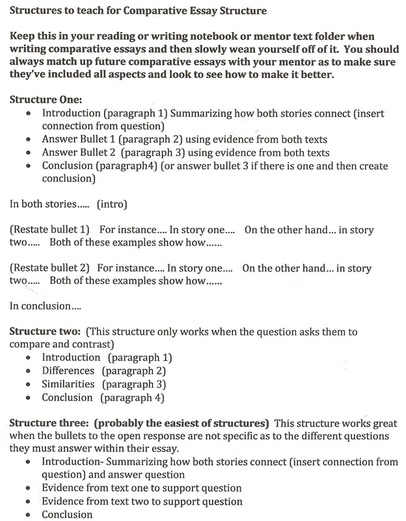
PRINT A COPY AND PUT IN EITHER YOUR READING NOTEBOOK OR MENTOR TEXT FOLDER.
SAMPLE LITERARY ESSAY AND GRAPHIC ORGANIZERS:
| overcoming_obstaclessampleessayorganizers.doc | |
| File Size: | 46 kb |
| File Type: | doc |
SPAGHETTI TEXT:
PROMPTS TO PUSH OUR THINKING ABOUT READING AND TIPS AND TOOLS FOR WRITING A THESIS AND TOPIC SENTENCE:
LINK TO BOAR OUT THERE AND SAMPLE RESPONSE:
| boarouttheresample.doc | |
| File Size: | 28 kb |
| File Type: | doc |
THEMES IN LITERATURE POWERPOINT:
| themeinlit.ppt | |
| File Size: | 3237 kb |
| File Type: | ppt |
FANTASY BOOK CLUBS #3: DUE MONDAY, MARCH 11:
| fantasybookclubs3.doc | |
| File Size: | 36 kb |
| File Type: | doc |
FANTASY BOOK CLUBS #1:
| fantasybookclubsone.doc | |
| File Size: | 30 kb |
| File Type: | doc |
MORE ABOUT FANTASY:
Fantasy: Good readers pay attention to their characters by determining the characteristics of their fantasy heroes, heroines, supporting characters-sidekicks and villains. (PART ONE)—Mentor Text: Where the Wild Things Are or fairytale
Link: Characters in fantasy are not limited to humans. Today we will think about dragons, unicorns, kings, queens, , witches, wizards, talking animals who are both benevolent (good) and malevolent (evil). Today we will begin to look at the types of main characters, their qualities and values.
Teach: Remember no matter what form (human or other), your character appears in, he must have some believable-relatable qualities and characteristics. Some of the considerations of a main character are:
· What type of speech does he or she use?
· Are there certain expressions—phrases that your character repeats over and over again?
· Does he or she usually speak seriously or humorously?
· What fears or phobias face your main character? What are they and how do they affect him or her?
· We consider jobs-occupations. Remember Pinocchio’s dad was a poor woodmaker? Jobs play a role in the tales. Often, main characters are poor like Charlie from Charlie and the chocolate factory.
· Values. What does your main character value? How does this impact his or her actions? In Beauty and the Beast, Belle values family and will do anything to protect her father even sacrifice her own well being.
Independent: Choose-select fantasy books. Preview books. Think about the type of magic (in an everyday world, life in a magical kingdom or journey to a magical world). Predict what theme might be (besides the obvious of good over evil). Start looking at characters—lifestyles, personalities, phrases and values and jotting down noticings).
PART TWO: Good readers pay attention to their characters by determining the characteristics of their fantasy heroes, heroines, supporting characters-sidekicks and villains. (PART TWO).
Link: Yesterday we began to think about the characters in our fantasy stories by considering their values, phobias and lifestyles, personalities. Today we will continue by considering such factors as their strengths, weaknesses, --family & friends.
Teach: (Model with a mentor text—Jumanji, perhaps?
We need to think about the strengths and magical powers the main characters possess. We consider how the main character will use these powers. How can these qualities contribute to the success of the main characters? Are there limitations? What about weaknesses? We think about how weaknesses of the main character might contribute to the problem faced by the main characters. We also need to pay attention to the family life and friends of main characters. We consider the type of family main character has and how important family is to him or her. Sometimes family members get in the way (like in Dahl’s stories). We think about their roles along with the types of friends our main characters have and the roles they play. We think about the relationships characters have with other characters and how sometimes problems of characters affect others.
Independent: Read and notice strengths, weaknesses, family life and friends of main characters independently and with book club books.
Share: Findings.
Link: Characters in fantasy are not limited to humans. Today we will think about dragons, unicorns, kings, queens, , witches, wizards, talking animals who are both benevolent (good) and malevolent (evil). Today we will begin to look at the types of main characters, their qualities and values.
Teach: Remember no matter what form (human or other), your character appears in, he must have some believable-relatable qualities and characteristics. Some of the considerations of a main character are:
- Name, age and life form. (Remember you may want to assign characters names based on their personalities. Remember Aunt Spiker from James and the Giant Peach?)
· What type of speech does he or she use?
· Are there certain expressions—phrases that your character repeats over and over again?
· Does he or she usually speak seriously or humorously?
· What fears or phobias face your main character? What are they and how do they affect him or her?
· We consider jobs-occupations. Remember Pinocchio’s dad was a poor woodmaker? Jobs play a role in the tales. Often, main characters are poor like Charlie from Charlie and the chocolate factory.
· Values. What does your main character value? How does this impact his or her actions? In Beauty and the Beast, Belle values family and will do anything to protect her father even sacrifice her own well being.
Independent: Choose-select fantasy books. Preview books. Think about the type of magic (in an everyday world, life in a magical kingdom or journey to a magical world). Predict what theme might be (besides the obvious of good over evil). Start looking at characters—lifestyles, personalities, phrases and values and jotting down noticings).
PART TWO: Good readers pay attention to their characters by determining the characteristics of their fantasy heroes, heroines, supporting characters-sidekicks and villains. (PART TWO).
Link: Yesterday we began to think about the characters in our fantasy stories by considering their values, phobias and lifestyles, personalities. Today we will continue by considering such factors as their strengths, weaknesses, --family & friends.
Teach: (Model with a mentor text—Jumanji, perhaps?
We need to think about the strengths and magical powers the main characters possess. We consider how the main character will use these powers. How can these qualities contribute to the success of the main characters? Are there limitations? What about weaknesses? We think about how weaknesses of the main character might contribute to the problem faced by the main characters. We also need to pay attention to the family life and friends of main characters. We consider the type of family main character has and how important family is to him or her. Sometimes family members get in the way (like in Dahl’s stories). We think about their roles along with the types of friends our main characters have and the roles they play. We think about the relationships characters have with other characters and how sometimes problems of characters affect others.
Independent: Read and notice strengths, weaknesses, family life and friends of main characters independently and with book club books.
Share: Findings.
FANTASY POWERPOINT:
| fantasypowerpoint.doc.ppt | |
| File Size: | 1653 kb |
| File Type: | ppt |
MAKING ETHICAL DECISIONS: DUE WEDNESDAY, FEBRUARY 27
| making_ethical_decisions.doc | |
| File Size: | 44 kb |
| File Type: | doc |
LINK TO SIX PILLARS OF CHARACTER: http://thanhayanguyen.files.wordpress.com/2009/10/ar_6-pillars-character_image3a.jpg
INTERNAL VS. EXTERNAL CONFLICT:
Inner conflict occurs when one is confronted with a problem that presents difficult choices. One must make a decision one way or another. Think about the events in your life and try to recall a time when you experienced an inner conflict—moral dilemma—tough decision.
External conflict occurs when one faces someone else or some situation that is working against one's own desires or goals.
- What was the problem?
- You had to choose between what two difficult choices?
- What decision did you make?
- What happened as a result of your decision?
External conflict occurs when one faces someone else or some situation that is working against one's own desires or goals.
- What do you want?
- What is working against you? What stands in the way between you and your goal?
DIFFERENT TYPES OF CONFLICT POWERPOINT:
| character_conflict.ppt | |
| File Size: | 4426 kb |
| File Type: | ppt |
THE OTHER SIDE (PRINT & KEEP A COPY IN MENTOR TEXT FOLDER):
WESTWARD #3: DUE THURSDAY, FEBRUARY 14
| westward_expansion3.doc | |
| File Size: | 29 kb |
| File Type: | doc |
READ MORE ABOUT TRAIL OF TEARS>
http://nativeamericans.mrdonn.org/trailoftears.html
http://www.kidskonnect.com/subjectindex/16-educational/history/282-trail-of-tears.html
http://www.powersource.com/cherokee/history.html
http://www.kidskonnect.com/subjectindex/16-educational/history/282-trail-of-tears.html
http://www.powersource.com/cherokee/history.html
LINK TO TRAIL OF TEARS VIDEO: http://www.gpb.org/georgiastories/videos/trail_of_tears
INTRODUCTION TO TYPES OF CHARACTERS:
Victim: an unfortunate person who suffers from some adverse-difficult circumstance.
Exploiter: A selfish person who uses or takes advantage of someone or something in order to advance his or her own cause.
Truth seeker: Someone making a search or inquiry for the truth. A truth seeker usually sets out to discover something important about him or herself of sets forth to prove a theory he or she has is in fact, true. A truth seeker usually has a good sense ( or a strong developing sense) of right and wrong. Sometimes the path to the truth lies within us (in other words, self-discovery).
Extroverts: Friendly, outgoing, sociable characters.
Introverts: Quiet types. Often deep thinkers.
Tyrants: Can be a cruel dictator or simply a mean and bossy, Veruka Salt type of character.
Good guy: Hero-protagonist—usually the character who is kind and whom we want to be successful.
Bad Guy: Antagonist, villain, usually a character who commits unkind, illegal or unethical acts.
Liar: A person who consistently withholds the truth in order to advance his or her own cause or benefit.
· MORE BACKGROUND: Victims: Characters who are experiencing a crisis, conflict or falls victim/scapegoat to a prank /crime. Circumstances are beyond his or her control.
exploiters: Characters who take advantage of others for his or her own advantage; a person who uses something or someone selfishly or unethically. (Ex: McBean and his star making machine in Sneetches).
truth-seekers He (or she) seeks the truth, the answers to things, things of his own choosing. He or she may seek the answers that will help others, not just himself. A character who is on a mission for what is right, good and out to solve a solution to a problem and settle a matter fairly).
extroverts (Characters who are extremely outgoing, colorful and expressive). Basically, an extrovert is a person who is energized by being around other people. Extroverts enjoy social situations since they enjoy being around people. In the Extrovert, the energy flow is outward, and the preferred focus is on people and things, whereas in the Introverted attitude the energy flow is inward, and the preferred focus is on thoughts and ideas.
introverts: Introverts often: have quiet energy; listen more than talk; think quietly inside my head; think, then act; feel comfortable being alone; derives energy from his or her internal world of emotions and ideas, while an extrovert draws from the outside world of people and activities for spiritual sustenance.
tyrants: A cruel and oppressive dictator or merely a bossy and demanding character who must have everything his or her own way
·good guys: The hero or heroine whom we root for and want to accomplish a goal. Usually epitomizes six pillars or character.
liar: A character who won’t tell the truth. A lie is a statement made by someone who believes or suspects it to be false, in the expectation that the hearers may believe it.
KEEP IN MIND THAT CHARACTERS CAN HAVE MORE THAN ONE CHARACTERISTIC OR TYPE!
Exploiter: A selfish person who uses or takes advantage of someone or something in order to advance his or her own cause.
Truth seeker: Someone making a search or inquiry for the truth. A truth seeker usually sets out to discover something important about him or herself of sets forth to prove a theory he or she has is in fact, true. A truth seeker usually has a good sense ( or a strong developing sense) of right and wrong. Sometimes the path to the truth lies within us (in other words, self-discovery).
Extroverts: Friendly, outgoing, sociable characters.
Introverts: Quiet types. Often deep thinkers.
Tyrants: Can be a cruel dictator or simply a mean and bossy, Veruka Salt type of character.
Good guy: Hero-protagonist—usually the character who is kind and whom we want to be successful.
Bad Guy: Antagonist, villain, usually a character who commits unkind, illegal or unethical acts.
Liar: A person who consistently withholds the truth in order to advance his or her own cause or benefit.
· MORE BACKGROUND: Victims: Characters who are experiencing a crisis, conflict or falls victim/scapegoat to a prank /crime. Circumstances are beyond his or her control.
exploiters: Characters who take advantage of others for his or her own advantage; a person who uses something or someone selfishly or unethically. (Ex: McBean and his star making machine in Sneetches).
truth-seekers He (or she) seeks the truth, the answers to things, things of his own choosing. He or she may seek the answers that will help others, not just himself. A character who is on a mission for what is right, good and out to solve a solution to a problem and settle a matter fairly).
extroverts (Characters who are extremely outgoing, colorful and expressive). Basically, an extrovert is a person who is energized by being around other people. Extroverts enjoy social situations since they enjoy being around people. In the Extrovert, the energy flow is outward, and the preferred focus is on people and things, whereas in the Introverted attitude the energy flow is inward, and the preferred focus is on thoughts and ideas.
introverts: Introverts often: have quiet energy; listen more than talk; think quietly inside my head; think, then act; feel comfortable being alone; derives energy from his or her internal world of emotions and ideas, while an extrovert draws from the outside world of people and activities for spiritual sustenance.
tyrants: A cruel and oppressive dictator or merely a bossy and demanding character who must have everything his or her own way
·good guys: The hero or heroine whom we root for and want to accomplish a goal. Usually epitomizes six pillars or character.
liar: A character who won’t tell the truth. A lie is a statement made by someone who believes or suspects it to be false, in the expectation that the hearers may believe it.
KEEP IN MIND THAT CHARACTERS CAN HAVE MORE THAN ONE CHARACTERISTIC OR TYPE!
TWO EIGHTEEN YEAR OLDS:
Read “Two Eighteen Year Old” poems. Reflect and respond: .
3. In what way are these two characters connected?
4. Do they know each other?
5. What would have to happen for the conditions in the factory to improve?
6. If they could talk to each other, what might they say?
7. What can we learn from this poem?
- Describe the two characters in the poem. What do they do? What do they care about? What do they want in life?
3. In what way are these two characters connected?
4. Do they know each other?
5. What would have to happen for the conditions in the factory to improve?
6. If they could talk to each other, what might they say?
7. What can we learn from this poem?
WESTWARD EXPANSION PACKET #2-DUE MONDAY:
| westward_expansion_book_club_packet.doc | |
| File Size: | 30 kb |
| File Type: | doc |
LINK TO "THE SWAZI ELEVEN." PRINT A COPY AND PUT THIS ARTICLE IN YOUR MENTOR TEXT FOLDERS, TOO!
ZOOCHOSIS ARTICLE (WE WILL SHARE AND DISCUSS ON WEDNESDAY):
LINK TO ZOO ARTICLE AND SCAFFOLDED QUESTIONS:http://teacher.scholastic.com/scholasticnews/indepth/endangered_species/zoos/index.asp?article=whatzoosdo
- Word analysis: What is an endangered species? What is a natural habitat?
- Details: According to this article, what is the main purpose of zoos in this country?
- Identifying claims-arguments? Provide one or two pieces of evidence the author uses that shows the main purpose of zoos.
- Inferences-judgments: If someone were using this article as research to write a persuasive essay in favor of or against zoos, which argument would this article be more likely to support and why?
- Evaluation: Sara S. Marinello, of the WCS (Wildlife Conservation Society) noted, "We are part of the web of life. We forget that sometimes. But we are animals and our earth is supporting us and it's all connected. It's a balancing act and we need to think about how we can sustain the planet to take care of us and all of the plants and animals that are on it." What does she mean by this and why do you think the author ended the story with this quote?
NEGATIVE IMPACT OF TELEVISION VIEWING:
http://www.livestrong.com/article/494842-excessive-television-and-the-effect-on-children/
http://www.timeforkids.com/news/turn-your-tv/11981
http://www.limitv.org/health.htm
http://www.med.umich.edu/yourchild/topics/tv.htm
http://www.timeforkids.com/news/turn-your-tv/11981
http://www.limitv.org/health.htm
http://www.med.umich.edu/yourchild/topics/tv.htm
INTRODUCTION TO WESTWARD EXPANSION: (INCLUDING BOOK CLUB PACKET #1--WE WILL BEGIN ON THURSDAY):
| westwardexpansionbackground_info.doc | |
| File Size: | 40 kb |
| File Type: | doc |
| westward_expansion_book_club_packets1.doc | |
| File Size: | 36 kb |
| File Type: | doc |
WESTWARD EXPANSION WEBSITES TO HELP:
http://www.ducksters.com/history/westward_expansion/timeline.php
http://www.socialstudiesforkids.com/subjects/westwardmovement.htm
http://www.kidinfo.com/american_history/pioneers.html
http://www.socialstudiesforkids.com/subjects/westwardmovement.htm
http://www.kidinfo.com/american_history/pioneers.html
LINKS TO SHARED READING ON POSITIVE EFFECTS OF TELEVISION:
http://kidstvmovies.about.com/od/healthytvhabits/a/tvgoodforkids.htm
http://www.livestrong.com/article/118554-advantages-children-watch-tv/
http://www.livestrong.com/article/118554-advantages-children-watch-tv/
INTRODUCTION TO NAVIGATING COMPLEX INFORMATIONAL TEXT SETS WITH CRITICAL ANALYTICAL LENSES
In this unit, we will:
· focus on comparing and contrasting texts,
· analyzing their claims/arguments,
· investigating authors’ perspectives or points of view and critiquing texts.
· Make connections across texts
· Draw conclusions
· Design our own informed opinions
· We will analyze multiple accounts of the same event or topic, noting important similarities and differences.
· We will ultimately be writing about with authority about whether or not animals belong in zoos. We will need to form our opinions based on reliable multiple sources. (What do I mean by that? Discuss). We will then take our knowledge and share our learning in a persuasive and convincing argumentative essay.
We will look at how and why authors choose to support one idea with a certain piece of evidence while another author chose to support with different reasons and evidence. We will try to figure out the author’s and websites’ biases. We will need to figure out if a source is reputable. (What does this mean—reputation—believable-reliable). We are working towards a common core standard of “integrating information from several texts on the same topic in order to write or speak about it knowledgeably.” We will see that our prior knowledge and reading influences what we read next.
· focus on comparing and contrasting texts,
· analyzing their claims/arguments,
· investigating authors’ perspectives or points of view and critiquing texts.
· Make connections across texts
· Draw conclusions
· Design our own informed opinions
· We will analyze multiple accounts of the same event or topic, noting important similarities and differences.
· We will ultimately be writing about with authority about whether or not animals belong in zoos. We will need to form our opinions based on reliable multiple sources. (What do I mean by that? Discuss). We will then take our knowledge and share our learning in a persuasive and convincing argumentative essay.
We will look at how and why authors choose to support one idea with a certain piece of evidence while another author chose to support with different reasons and evidence. We will try to figure out the author’s and websites’ biases. We will need to figure out if a source is reputable. (What does this mean—reputation—believable-reliable). We are working towards a common core standard of “integrating information from several texts on the same topic in order to write or speak about it knowledgeably.” We will see that our prior knowledge and reading influences what we read next.
SHARED TEXT: BACTERIA: THE GOOD, THE BAD AND THE STINKY
| bacteria.doc | |
| File Size: | 30 kb |
| File Type: | doc |
QAR (QUESTION ANSWER RELATIONSHIPS):
- Right There. The answer is in the text, and if we pointed at it, we'd say it's "right there!" Often, the answer will be in a single sentence or place in the text, and the words used to create the question are often also in that same place.
- Think and Search. The answer is in the text, but you might have to look in several different sentences to find it. It is broken up or scattered or requires a grasp of multiple ideas across paragraphs or pages.
- Author and You. The answer is not in the text, but you still need information that the author has given you, combined with what you already know, in order to respond to this type of question.
- On My Own. The answer is not in the text, and in fact you don't even have to have read the text to be able to answer it.
GREAT DEPRESSION READING PARTNERSHIP:
| great_depression_book_clubs.doc | |
| File Size: | 594 kb |
| File Type: | doc |
LIFTING A LINE: (PLEASE REVIEW)
| liftingaline.doc | |
| File Size: | 32 kb |
| File Type: | doc |
NON FICTION READING PROMPTS (YOU MAY PRINT DOUBLE SIDED):
| nonfictionquestions.doc | |
| File Size: | 27 kb |
| File Type: | doc |
| nonfiction_differentiated_strategies.doc | |
| File Size: | 53 kb |
| File Type: | doc |
NON-FICTION RAN CHARTS:
PRINT AND PUT IN YOUR READING NOTEBOOK.
| ranstrategy.doc | |
| File Size: | 26 kb |
| File Type: | doc |
CHARACTER COUNTS: DUE TUESDAY, OCTOBER 30 BUT PACE YOURSELF. DO ONE SECTION EACH NIGHT.
| charactercountsresponsetoliterature.doc | |
| File Size: | 89 kb |
| File Type: | doc |
SWBS CHART: (TO BE COMPLETED AND HANDED IN WITH YOUR CHARACTER COUNTS RESPONSE TO LITERATURE):
PARTNER BOOK ADS:
| bookads.doc | |
| File Size: | 29 kb |
| File Type: | doc |
LEADS AND ENDINGS:
DIFFERENT KINDS OF LEADS:
- The Grabber Lead: Writer begins with an element of surprise. Lead seizes reader’s attention and makes one think anything can happen. (EX: Shrek, the Picture Book). Or it may begin by simply asking the reader a question.
- Dramatic Lead: Starts with a scene and gives reader “sneaky pleasure” of eavesdropping on a conversation. (EX: On My Honor).
- Introducing the Narrator: Establishes and gets reader comfortable with who is telling the story. (EX: Changes in Latitude, Fig Pudding).
- The Moody Lead: Begins with a description of a place that sets the mood for what follows. It is like background music you hear at the beginning of a movie. (EX: Tuck Everlasting, Twilight Comes Twice).
- Sound Effects: Using onomotopeia to start your story.
- Misleading Lead: Writer deliberately sets you up for something other than what unfolds.(EX: “The camping trip started on a perfect October day, the skies emerald blue with just a hint of a chill in the air. Don’t you just know trouble will follow?”
- Beginning at the end: Writer reveals the ending before unfolding the story. (EX: “We sat in the intensive care unit while I kept thinking of my father, fighting for his life inside. The day had started peacefully).”
- BIG BANG ENDINGS
- HUMOROUS ENDING: Catches the reader off guard by tickling their funny bone instead of their intellect. (EX: Babies leak, Fig Pudding).
- CIRCULAR ENDING: Ties together the beginning and end. Some authors use it to return to the actual beginning of the writing. You can also take a detail or incident from the beginning and return to it at the end. (EX: House on Mango Street, If You Give a Mouse a Cookie).
- SURRPRISE ENDING: Leaves reader with a “Whoa! What’s Going on?” feeling of being surprised, startled and shocked at the end of the story. (Must be carefully planned. The seed for a surprise ending has to be planted early on in the story).
- EMOTIONAL ENDING: A powerful writing tool that packs an emotional punch. Makes you think deeply, care and even cry. May be food for thought for your reader. (EX: from Charlotte’s Web, “ It’s a rare thing to find someone who is both a good friend and a good writer. Charlotte was both. In A Taste of Blackberries, the main character deals with his best friend’s death by going back to the blackberry patch where his friend died after getting stung by a bee, picking some blackberries and presenting them to his friend’s mother).
- REMEMBER: DON’T MAKE YOUR ENDINGS DO TOO MUCH. BUT TRY TO GIVE THE READER SOMETHING SPECIAL IN THE END: A MEMORABLE QUOTE, STATEMENT OR IDEA THT WILL LINGER IN THE MIND. MAKE A DEEP IMPRESSION!
| figurativelanguage-1.ppt | |
| File Size: | 603 kb |
| File Type: | ppt |
HOUSE ON MANGO STREET ESSAY, SAMPLE ESSAY AND RUBRIC (DUE FRIDAY, OCTOBER 26)-OUTLINE WITH THEME, THREE EXAMPLES AND TWO "BIG QUOTES" FROM brainyquote.com or quotegarden.com RELATED TO YOUR TOPIC ARE DUE BY MONDAY, OCTOBER 22).
| mangoessay.doc | |
| File Size: | 26 kb |
| File Type: | doc |
| mangosampleessay.doc | |
| File Size: | 29 kb |
| File Type: | doc |
| house_on_mango_street_literary_essay_rubric.doc | |
| File Size: | 31 kb |
| File Type: | doc |
SOUNDS OF SILENCE-ON THE ROAD POEMS:
| sounds_of_silence.doc | |
| File Size: | 29 kb |
| File Type: | doc |
IDENTITY
Identity
by Julio Noboa Polanco
Let them be as flowers,
always watered, fed, guarded, admired,
but harnessed to a pot of dirt.
I'd rather be a tall, ugly weed,
clinging on cliffs, like an eagle
wind-wavering above high, jagged rocks.
To have broken through the surface of stone,
to live, to feel exposed to the madness
of the vast, eternal sky.
To be swayed by the breezes of an ancient sea,
carrying my soul, my seed,
beyond the mountains of time or into the abyss of the bizarre.
I'd rather be unseen, and if
then shunned by everyone,
than to be a pleasant-smelling flower,
growing in clusters in the fertile valley,
where they're praised, handled, and plucked
by greedy, human hands.
I'd rather smell of musty, green stench
than of sweet, fragrant lilac.
If I could stand alone, strong and free,
I'd rather be a tall, ugly weed.
by Julio Noboa Polanco
Let them be as flowers,
always watered, fed, guarded, admired,
but harnessed to a pot of dirt.
I'd rather be a tall, ugly weed,
clinging on cliffs, like an eagle
wind-wavering above high, jagged rocks.
To have broken through the surface of stone,
to live, to feel exposed to the madness
of the vast, eternal sky.
To be swayed by the breezes of an ancient sea,
carrying my soul, my seed,
beyond the mountains of time or into the abyss of the bizarre.
I'd rather be unseen, and if
then shunned by everyone,
than to be a pleasant-smelling flower,
growing in clusters in the fertile valley,
where they're praised, handled, and plucked
by greedy, human hands.
I'd rather smell of musty, green stench
than of sweet, fragrant lilac.
If I could stand alone, strong and free,
I'd rather be a tall, ugly weed.
IDENTITY QUESTIONS:
Answer the following questions in your partnership. You may discuss the questions and answers together; however, each individual in the group must have his/her own copy of the responses.
1. Who is the speaker of the poem? Explain your answer.
2. What is the tone of the poem? Give a specific example from the poem to support your answer.
3. What is the mood of the poem? Explain your answer.
4. Are alliteration and/or onomatopoeia present in the poem? If so, give specific examples from the poem of each device.
5. Are similes, metaphor, and/or personification present in the poem? If so, give specific examples from the poem of each device.
6. Is imagery present in the poem? If so, give specific examples from the poem to support each sense present.
7. What is the theme (s) of the poem? Explain your answer.
8. What is the extended metaphor? Give three specific examples from the poem that are components or extensions of this metaphor.
9. Explain how the extended metaphor supports the theme (s).
1. Who is the speaker of the poem? Explain your answer.
2. What is the tone of the poem? Give a specific example from the poem to support your answer.
3. What is the mood of the poem? Explain your answer.
4. Are alliteration and/or onomatopoeia present in the poem? If so, give specific examples from the poem of each device.
5. Are similes, metaphor, and/or personification present in the poem? If so, give specific examples from the poem of each device.
6. Is imagery present in the poem? If so, give specific examples from the poem to support each sense present.
7. What is the theme (s) of the poem? Explain your answer.
8. What is the extended metaphor? Give three specific examples from the poem that are components or extensions of this metaphor.
9. Explain how the extended metaphor supports the theme (s).
I WANNA BE FREE
I want to be free
Like the bluebird flying by me
Like the waves out on the blue sea
If your love has to tie me
Don’t try me, say goodbye
I want to be free
Don’t say you love me
Say you like me
But when I need you beside me
Stay close enough to guide me
Confide in me
I want to hold your hand
Walk along the sand
Laughing in the sun
Always having fun
Doing all those things without any strings to tie me down
I want to be free
Like the warm September wind, babe
Say you’ll always be my friend, babe
We can make it to the end, babe
Again, babe
I got to say
I want to be free
Like the bluebird flying by me
Like the waves out on the blue sea
If your love has to tie me
Don’t try me, say goodbye
I want to be free
Don’t say you love me
Say you like me
But when I need you beside me
Stay close enough to guide me
Confide in me
I want to hold your hand
Walk along the sand
Laughing in the sun
Always having fun
Doing all those things without any strings to tie me down
I want to be free
Like the warm September wind, babe
Say you’ll always be my friend, babe
We can make it to the end, babe
Again, babe
I got to say
I want to be free
I AM A ROCK:
A winter’s day
In a deep and dark December
I am alone
Gazing from my window
To the streets below
On a freshly fallen silent shroud of snow
I am a rock
I am an island
I’ve built walls
A fortress deep and mighty
That none may penetrate
I have no need for friendship
Friendship causes pain
It’s laughter and it’s loving I disdain
I am a rock
I am an island
Don’t talk of love
But I’ve heard the word before
It’s sleeping in my memory
I won’t disturb the slumber
Of feelings that have died
If I never loved, I never would have cried
I am a rock
I am an island
I have my books
And my poetry to protect me
I am shielded in my armor
Hiding in my room
Safe within my womb
I touch no one and no one touches me
I am a rock
I am an island
And a rock feels no pain
And an island never cries
In a deep and dark December
I am alone
Gazing from my window
To the streets below
On a freshly fallen silent shroud of snow
I am a rock
I am an island
I’ve built walls
A fortress deep and mighty
That none may penetrate
I have no need for friendship
Friendship causes pain
It’s laughter and it’s loving I disdain
I am a rock
I am an island
Don’t talk of love
But I’ve heard the word before
It’s sleeping in my memory
I won’t disturb the slumber
Of feelings that have died
If I never loved, I never would have cried
I am a rock
I am an island
I have my books
And my poetry to protect me
I am shielded in my armor
Hiding in my room
Safe within my womb
I touch no one and no one touches me
I am a rock
I am an island
And a rock feels no pain
And an island never cries
DEVELOPING EMPATHY FOR OUR CHARACTERS:
Developing empathy for Our Characters’ World.
Connect: Last week, we discussed the importance of developing empathy for characters and people—having the capability of putting ourselves into their shoes—being able to share their emotions, make connections to their experiences and try to understand how they feel about themselves and their lives. Your character counts activity asks you to do this. Let’s continue with our read aloud of The Graduation of Jake Moon and think about how some of these characteristics apply.
1. Physical attributes: Jake looks like any other fifth grader his age. His physical attributes do not seem to impact the story.
• Tell what your character looks like.
• Think about how the character’s physical attributes play a role in the story. How does the character feel about his or her physical characteristics?
• How does the character change physically during the story? How do these changes affect the character’s experience? We cannot answer this until the end of the story.
2. Intellectual attributes: Jake is very bright and we know from the title that he will be graduating which means he will be learning very important life lessons. He knows a lot about Altzheimer’s and the toll it is taking on his grandfather. He seems to also understand how others do not have the capacity to understand the disease—since they seem confused by his grandfather’s actions. Jake is smart enough to thrive but his grandfather’s illness is greatly impacting his own life. Sometimes, he tries to escape—like the time he ran away during the baseball game when his grandpa walked onto the field. He has friends and does well in school. I am reading with the idea that he will learn that life has hardships that we all must endure. And even when those we love start to change, we must be strong, remember the loving times and go on with our lives—even when it is not easy.
• How would you describe this character’s intelligence?
• What does this character know a lot about?
• How does this character’s intellect compare to others in the story?
• Is this character smart enough to thrive and do well in the world in which he or she lives in?
• What important life lesson (s) does this character learn as the story develops?
3. Emotional attributes: This character seems to be wrestling with his conscience at all times. Do I continue loving grandpa despite of his illness or just give up on this silly old fool? He wants to be a loving grandson but his grandfather’s illness embarrasses him and sometimes seems to prevent him from having a normal life—like having friends come over. Grandpa always seems to do something ridiculous and he hates always having to make excuses for grandpa. So he is torn—do I continue loving and supporting grandpa and risk losing some friends? Or do I just have fits and give up?
• How does this character feel most of the time? Jake seems sad and confused most of the time.
• How do his or her feelings change throughout the story? I think he will have to accept that some things in life can’t be controlled. But we need to hang on to good memories and keep love in our hearts.
• How does the character feel about himself or herself? Again, he seems to be judging himself and trying to be a good loving grandson yet also trying to be a normal kid.
• When faced with challenges, what emotions come up for this character? Mostly anger, embarrassment and frustration.
4. Social attributes:
• How does this character get along with other characters in the story? He seems to have friends but may have some trouble hanging out since he has to spend time taking care of his grandpa.
• Who does this character choose for friends and why does this character choose them? He seems to choose other regular kids just like him.
5. Philosophical attributes:
• What does this character believe about the way life is or supposed to be like? He believes he needs to be strong and a loving family member. There is some burden on him since there is no father figure at home. His mom seems to have given him lots of responsibilities.
• What are these beliefs based on? (In other words, did they learn their values and morals from family members or other places?)
• How do the character’s beliefs and values affect the choices he or she makes? (For example, does he or she let his or her conscience be the guide?) He is constantly wrestling with his conscience and trying to be a regular kid while dealing with a difficult illness.
• Do any of the characters values or beliefs change during the story? If so, how and why? I think he will begin to be less judgmental of himself and realize these circumstances are out of his control.
• Do others share the character’s beliefs? Explain.
Okay. So now it is your turn. When you read today, keep some of these characteristics in mind. Consider how the main character’s physical, intelligence, social, emotional & philosophical attributes play an important role in the story. Choose one or two to focus on and keep in mind how they may change during the course of the story.
READING PARTNERSHIPS: Print a copy of these for your reading notebooks and to help guide your partner book conversations:
| readingpartners.doc | |
| File Size: | 40 kb |
| File Type: | doc |
READING PARTNERS: We will work on these partnership responses during the next couple of weeks. As a culminating activity, we will prepare book commercials. Make sure both partners have a copy of this packet.
| readingpartners.doc | |
| File Size: | 40 kb |
| File Type: | doc |
THICK QUESTIONS PROMPTS: (a copy of these should be in your reading notebooks, too): http://tps.govst.edu/projects/aduhig/word_loc/GSU%20attached/thick_questions.pdf
CHARACTER TRAITS:
Print a copy of this and put it in your reading notebooks.http://www.readwritethink.org/files/resources/lesson_images/lesson175/traits.pdf
HOW ANY WHY CHARACTERS CHANGE GRAPHIC ORGANIZER: http://www.readwritethink.org/files/resources/lesson_images/lesson858/change.pdf
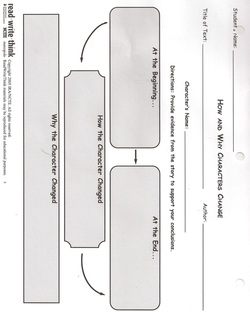
HOW AND WHY CHARACTERS CHANGE RUBRIC:
| changerubric.doc | |
| File Size: | 27 kb |
| File Type: | doc |
CHARACTER TRAITS:
Print out and put in reading notebook. We will work on in class this week.
IN ORDER TO DO A GOOD RE-TELLING:
In order to do a good re-telling we:
- Tell how the story begins without giving away every detail
- Describe the main characters
- Describe where and when the story takes place (the setting)
- Identify the problem/conflict in the story and how it affects the main characters
- Be sure to tell about the main events of the beginning, middle and end of the story
- Identify one big idea/theme (EX: Is it a story about friendship, overcoming your fears, growing up, etc).
- Give at least one piece of evidence that supports the big idea or theme. (Ex: I know that this is really a story about never giving up your dreams because…)
WAYS TO RESPOND TO A TEXT-ADVICE FOR HAVING A POST IT CHAT-
MAKE SURE YOU SCROLL TO SECOND PAGE FOR PROMPTS. FIRST PAGE IS A REVIEW FOR ACTUALLY HAVING A POST IT CHAT:
PROMPTS TO HELP ME TALK OR WRITE ABOUT MY THINKING OF FICTION TEXTS:
| prompts_to_help_me_talk_or_write_about_my_thinking_of_texts.doc | |
| File Size: | 34 kb |
| File Type: | doc |
| book_clubs_prompts.doc | |
| File Size: | 28 kb |
| File Type: | doc |
READING WORKSHOP:
Throughout the school year, students will be reading various genres within their level. They will be engaged in book clubs, partnerships, Author Studies, and much, much more. They will be studying various themes and topics and will be looking at them through many different books and perspectives. They will learn to critically analyze texts in order to form theories and opinions about the issues and concepts in the world around them. It is through reading that we will explore the concept of "learning how to live" and apply those lessons taught to the situations that surround our lives each day. Most importantly, students will learn strategies for finding evidence across many different levels and texts in order to formulate strong arguments for their opinions.
READING WORKSHOP RULES AND REGULATIONS:
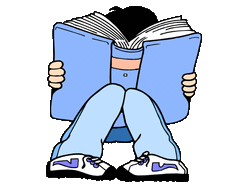
1. You must read a book. Magazines, newspapers and comic books don’t have the chunks of texts you need to develop fluency. They won’t help you discover who you are as a reader of literature. (Please note: they are acceptable during transitional periods of the day as well as for reading material at home or during indoor lineup days).
2. Don’t read a book you don’t like. Don’t waste time with a book you don’t love when there are so many great books out there waiting for you. However, you should try to give some books a chance. Sometimes, it takes a couple of chapters before you “settle in” and get used to and interested in a book.
3. If you really don’t like a book, find another one. Browse; ask me, the librarian or a friend for a recommendation.
4. It’s okay to re-read a book you love. This is what readers do.
5. Record every book you finish in your reading log and complete a reading journal entry for each book you read.
6. Collect information about yourself as a reader, look for patterns and take satisfaction in your accomplishments over time.
7. Understand that reading is thinking. Do nothing to distract the teacher or other readers. Don’t put words into our brains as we are trying to escape into the worlds created by the authors of our books.
8. When you confer with me or your partners use a soft voice as I use when I talk to you; whisper.
9. Read and write in your reading journal the whole time.
2. Don’t read a book you don’t like. Don’t waste time with a book you don’t love when there are so many great books out there waiting for you. However, you should try to give some books a chance. Sometimes, it takes a couple of chapters before you “settle in” and get used to and interested in a book.
3. If you really don’t like a book, find another one. Browse; ask me, the librarian or a friend for a recommendation.
4. It’s okay to re-read a book you love. This is what readers do.
5. Record every book you finish in your reading log and complete a reading journal entry for each book you read.
6. Collect information about yourself as a reader, look for patterns and take satisfaction in your accomplishments over time.
7. Understand that reading is thinking. Do nothing to distract the teacher or other readers. Don’t put words into our brains as we are trying to escape into the worlds created by the authors of our books.
8. When you confer with me or your partners use a soft voice as I use when I talk to you; whisper.
9. Read and write in your reading journal the whole time.
